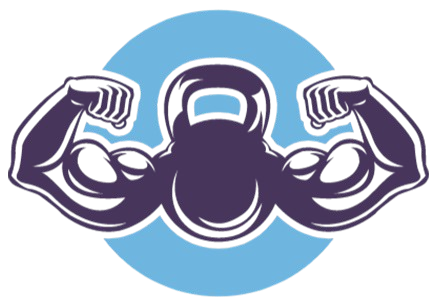Fitpro Income
How to stay organized as a Personal Trainer (Step-by-step)
Personal training is a very busy career, there’s a lot to do and a lot to keep on top of.
You will be meeting clients for training sessions, delivering consultations, health assessments, scouting for new clients and working on your marketing materials.
In such busy environment, it would be easy to lose track of which client was at what stage of their training, which clients have paid and who you need to collect from and a whole bunch more.
So, what can you do to make sure you are staying organised as a PT or fitness coach?
In this article, I will be explaining exactly how to stay organised as a personal trainer.
Sound good?
Let’s go….

Most people new to the personal training business will look up to the busiest trainers in their gym and wish they had a diary as full as them.
Completing back to back sessions, helping tons of people and making a great salary are ambitions of many people when they enter the industry.
These are great ambitions to have, and why should you want to be a quiet personal trainer?
Once you have your marketing down and your complimentary sessions converting loads of members into paying clients you will start to see your diary filling up very nicely.
In fact, if you have a read of my article “What do personal trainers do each day” you will see what a day in the life of a busy pt entails.
But, what happens when you find yourself with very little time in between clients to organise yourself? How do the busiest trainers in the gym find time to get all those session plans written up, marketing sorted and keep track of client payments?
Well, here are some tips that allow the busiest pt’s in the business to keep professional and on top of things at all times.
How to stay organised as a personal trainer
- Create an exercise library
- Write programs well ahead of time
- Plan your sessions fully for each day
- Allocate your rest breaks
- Create an income and expenses spreadsheet
- Hire an accountant
- Record keeping
- Have separate phone numbers and email addresses for business and personal use
- Confirm every session
- Find your style and stick to it
- Use technology
- Make your clients sign off for each session they complete
1. Create an exercise library

One of the most time-consuming aspects of organising clients is writing up individually tailored exercise programmes for them.
The very last thing you want to find yourself doing is scrambling to remember exercises to add into programmes that are fun and effective for your clients.
You can of course search for exercises on the internet and then write the programmes up as you need them. There’s nothing wrong with doing that, but it’s much quicker to write up a vast database of exercises that you can quickly look through when writing up your programmes for each client.
You can use Google docs or an Excel spreadsheet to create sheets for legs exercises, chest exercises and so on. You can then categorize them into the types of equipment they use and what times of the day they would work best at.
This helps because there is nothing worse than trying to quickly figure out a workout that will be suitable for a client at peak times of the day when the session is about to begin. I almost guarantee you that your mind will go totally blank just as you need it the most.
2. Write programs well ahead of time

Staying on the theme of clients exercise programmes, one practise that I found made a huge difference was writing up a clients programme to cover six months of training as soon as the client signed up with me.
Using the exercise database that I had created, I could quickly write up a full six-month training programme. This meant I had a complete training programme that I didn’t need to look at again for half a year.
Admittedly, these programmes did sometimes need to be altered slightly, but once I knew my clients’ goals and I had conducted the pre-training assessments, I had a very good idea of where they would be starting from.
Being able to plan ahead of time like this meant I no longer had to spend my breaks or evenings writing up training cards for the next days’ clients. It saved me a massive amount of time and made my jobs a lot less stressful and more enjoyable.
3. Plan your sessions fully for each day
Once you have a nice full diary, you are likely to have several hours of back to back sessions, which is great!
What it does mean though, is that you won’t have time to go between clients to pick up programmes or anything else you need for that morning or afternoons sessions.
So, plan ahead of time by having all your programme cards for the day displayed in the order they should be completed in. You can do this on your clipboard (if you are old-school), or written up on your phone (for anyone under the age of 35 who wouldn’t even consider using a clipboard).
This will allow you to quickly move from one session to the next by simply taking out the old programme card and moving onto the next one, or clicking onto the next clients’ workout on your phone.
Planning to take a quick few measurements of your client at 10:55 am just before your 11 am session starts? Then make sure you have everything you need available so you can quickly go and grab them, take the measurements, get it recorded and move on to your next session.
4. Allocate your rest breaks

Being busy is great, but you will need rest periods so you can get something to eat and take the weight off your legs for half an hour or so.
It may be tempting to book five of six hours back to back, but after a few weeks of doing this, you will really wish you hadn’t.
Being a fitness coach means you need to have and maintain high energy levels through your whole day, from your first session at 6 am to your last at 8 pm at night.
You cannot do this is you are working non-stop for five or six hours at a time, and your clients will start to see a noticeable lack of interest and energy on your part.
Remember, they are paying you to motivate them and help them work through tough workouts, If you are falling asleep or hardly saying anything because of brain fog, they are not going to enjoy their sessions and may start to look for another trainer.
You need to decide at which points in the day you will need a breather to rest and re-feed.
It’s best to book yourself a half-hour or hour-long break at mid-morning and mid-afternoon each day, and do not be tempted to book a client into these times.
Physically put them into your diary so your clients can see that the times you have booked for yourself are not available to book the session into.
I add this point, because its very tempting to get excited and book as many sessions in as you can. I want you to be excited, but I also want you to be able to give your clients 100% for every session they have with you.
Your high energy levels and enthusiasm are some of the greatest tools you have in terms of client retention, and it’s a lot easier to keep the clients you already have than to try and find new ones.
5. Create an income and expenses spreadsheet

If you are a freelance trainer (which a great deal of you reading this will be), then you will know sifting through your bank statements two weeks before the deadline to submit your tax returns sucks!
It can take hours to go through a full year’s worth of statements and find every payment made to you and everything that you think you purchased for the business.
Instead, create a spreadsheet (Google Sheets or an Excel spreadsheet will do just fine), and every time a client pays you or you make a purchase, remember to add it to your spreadsheet with the date.
This way, even if you do need to show and highlight your bank statements to be sent off, you can quickly find the date of the transaction. The persons name who paid you for sessions or purchases you have made can be found, highlighted and added to your tax return.
Nice and easy!
6. Hire an accountant

This tip is really up to you, and it depends entirely on how much time you have, how desperate you are to save and how much you value your own time.
Filing your tax returns is something that every freelance or online trainer needs to do every year. It can be very tiresome and for some people very complicated and stressful.
If you want to fill in the forms and get them sent off yourself, you can totally do this, but I can assure you it can be a lot of effort and always time-consuming.
If you hire an accountant, they will probably give you access to a spreadsheet (like I suggested above), where you can add all your payments and expenses. All you need to do then is make sure you have kept all your receipts and send it all off to them so they can do all the leg work for you.
Yes it costs money, and newer trainers might want to be holding onto as much cash as possible, but it really isn’t that expensive from my own experience and it saved me a whole lot of time.
It also saved me a lot of money as I found out that I could submit certain purchases as business expenses that I had no idea I could put through.
Seriously, hire an accountant, even if you are fairly new and starting out in the industry, it really isn’t worthwhile your time unless you are very confident that you will understand everything required straight away.
Let accountants focus on being great accountants so that you can focus on being a great personal trainer.
7. Record keeping

I really hope that this point doesn’t come across in a patronizing way at all, as that is certainly not my aim.
But, in order to be organised as a PT or fitness coach, you need to be organised generally first.
You will need to be keeping on top of a lot of details as previously discussed. Your receipts, qualifications, insurance documents and any other important materials should all be kept together in one safe place where you can easily find them should you need to.
I am lucky in the sense that I have always been an organised person, but I know this doesn’t come naturally to some.
If you know you are the type of person who frequently loses things or worries about losing things, make sure you have a file or cabinet where you can store anything of importance so you know exactly where it is at all times.
I am very old-school as I have already stated, so I used to keep all my documents in an accordion file in my bedroom. This way, come the time when I needed to start filing tax returns etc, I could find the information by date and by client name.
This made the very small hassle of keeping my documents even easier, by knowing exactly where they were when I needed them. Develop this habit early so that you get used to doing it as a matter of routine.
Do not let yourself get into the situation where you are desperately sifting through every piece of paper you can find hoping it is a receipt for the business phone you bought and want to have deducted from that year’s tax bill.
It’s a very easy thing to avoid and will save you a lot of stress.
8. Have separate phone numbers and email addresses for business and personal use

Keep your work and personal life separate as much as possible.
It’s easy to mistake clients for friends and vice versa which could end up in unprofessional situations occurring.
Buy yourself a decent phone that you can use for your work purposes (it’s tax-deductible of course), and make sure you only ever use it to run your business.
Email addresses are exactly the same, do not give out your personal email address to clients. For one thing, it can look unprofessional (Joshwilber69@hotmail.com doesn’t sound too great for your business), but you can also miss emails that get put into spam folders and are generally clogged up with all the other emails you get.
Create a completely new email account that you keep as clean as possible (clear out all the rubbish you get sent out and check your spam folders regularly) and only use for your training business.
This way you will be able to easily see when your clients have asked you questions, cancelled bookings or have referrals being sent your way.
9. Confirm every session
A big part of staying organised is making sure your clients are actually going to show up for their sessions.
It’s easy to just assume that every client you book into a session slot is going to appear on time, but every now and then, they won’t. Maybe they forgot, or something came up last minute and they forgot to get in touch with you.
Either way, you are now stood around for an hour waiting for the next session to hopefully happen. If you had confirmed with your client at the end of the previous session that they were ok to have the next one at the same time, or in their usual time slot, you would not have this worry.
It’s more of a loss than it seems, as you are now not only losing the money you would have made from that session, but you are losing out on money from a session you could have booked in place of your usual client.
It’s even more important to have confirmation from members that are coming in for a complimentary session with you.
People will say yes at the drop of a hat to a free session with a PT, but when it comes to the time they are supposed to be training with you, they sometimes just don’t show up at all, leaving you in the same situation as above.
If you don’t want to find yourself constantly looking at your watch wondering if a comp session member is going to show up or not, confirm the week before, confirm the night before and confirm on the day.
The more you confirm with a member that they are coming to a complimentary session, the more likely they are to show up, even if it’s just so they don’t have to feel the guilt of letting you down. Use that as a perfect chance to show them just what they would have missed out on if they had bailed on you.
In my article “60% Conversion PT Consultation Sessions: A How-To Guide” I highlight the importance of confirmation of training sessions from both complementary sessions and standard weekly sessions.
10. Find your style and stick to it
Man I was guilty of this one!
I get easily excited by new techniques and training methods, diets and whatever next big thing comes onto the fitness scene.
Naturally, when you get excited about something that may help your own training, you want to show your clients and get them trying these wonderful new techniques too.
By doing this, you are never really getting good at what you do, as you are always moving onto a new style of training.
Instead, sit down and think about how you like to train yourself. This way of training will almost certainly be the best method to train your clients with, as it is the one your not only enjoy doing yourself, but you must also believe that it works, otherwise, why are you doing it?
If you fully believe in the benefits of functional training, teach it, if you are more old school and want to stick to barbell squats and bench presses, teach that. Teach whatever you feel comfortable with and your sessions and teaching will always come across as more genuine.
It’s very tempting to start using different methods of training to try to keep clients entertained and coming back for more, but you know what will really motivate them to keep training with you?
Results!
And results are exactly what they won’t get if you keep switching from one method of training to another.
If you are not sure what kind of style or “niche” you are going to develop, I wrote a great article that explains how to find yours and the pros and cons of niches in general. I think it will really help you understand more about the process, so give it a go.
How To Find Your Personal Training Niche
11. Use technology
There are tons of fitness apps, organisers and planners available to you nowadays.
I really wish I had the opportunity in my earlier days of being a trainer to have access to so many methods of organising my day and my clients.
There are now complete personal training systems developed specifically to help you keep track of exactly what we have discussed today.
These programmes allow you to record your clients’ workouts, assessments results, income and expenses and have libraries of exercises for you to utilise.
Technology like this is the perfect option if you are not organised enough to handle each component separately and want to see your entire business in one place.
I would heavily suggest that if you don’t consider yourself to be one of the most organised people out there that you give a programme like Trainerize, as it will make your life a whole lot easier.
Of course, there are the more simple planners that you can get on your phones that are really great too, so if you see an app or programme that you think will make your life easier, then use them.
12. Make your clients sign off for each session they complete

This technique dates back to my days working in a health club where each session needed to be signed off by the client to prove I had completed the session.
If the session wasn’t signed for, I didn’t get paid.
Do you think I made sure that every session was signed for?
Absolutely!
When I became a freelance, I realised that I no longer needed to play by other peoples rules, and I could run my business anyway I liked.
One of the rules I did keep though was signing off sessions, and the reason is simple.
I wanted to make sure that every client knew exactly when they were due for their next block of sessions and I certainly didn’t want any arguments turning things sour if clients thought I was stiffing them for sessions.
If a client has a block of ten sessions and you have nine signatures from them, you and they both know that they will need to be buying another block of sessions soon if they wish to carry on, no if’s no buts.
People will try to take advantage of you, its an unfortunate fact of life. This method allows there to be no question as to how many sessions have been completed.
A quick last point is that it also lets you know how many sessions you have until you need to start changing the exercise routine round.
You should be changing your clients’ workouts around every four to six weeks in order to continue progressive overload and to keep them interesting to encourage client retention.
Seeing that your client has signed off their fourth session out of the six they are doing before they move into a hypertrophy phase (for example), will allow you plenty of time to start getting the next routine ready for them.
Conclusion
It’s not difficult to be organised as a personal trainer, it’s not really different from being organised in any other aspect of your life.
Preparing your sessions months in ahead and using apps and programmes may seem like a hassle, but it’s nothing compared to the hassle you will have when you have no idea who is supposed to be arriving at what time of day, what they are doing that day and if they have paid or not.
Being a personal trainer should be quite a simple job, and it really can be just as long as you keep your admin and yourself organised from the start, rather than wishing you had as problems arise.
I really hope this article has helped you see some of the methods available to you to make your life as a pt of fitness coach a whole lot easier.
Go get ’em!
